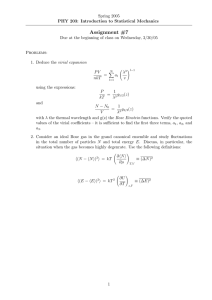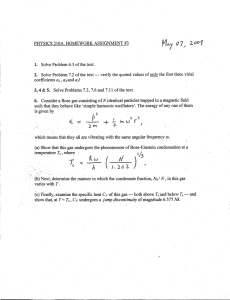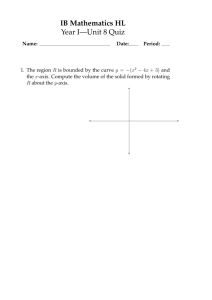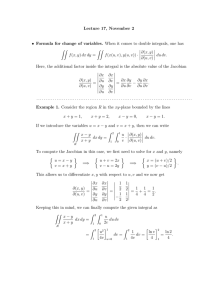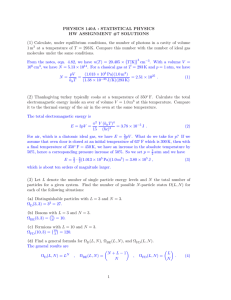Assignment Reading Week (February 25 – Friday 1 March, 2013)
advertisement
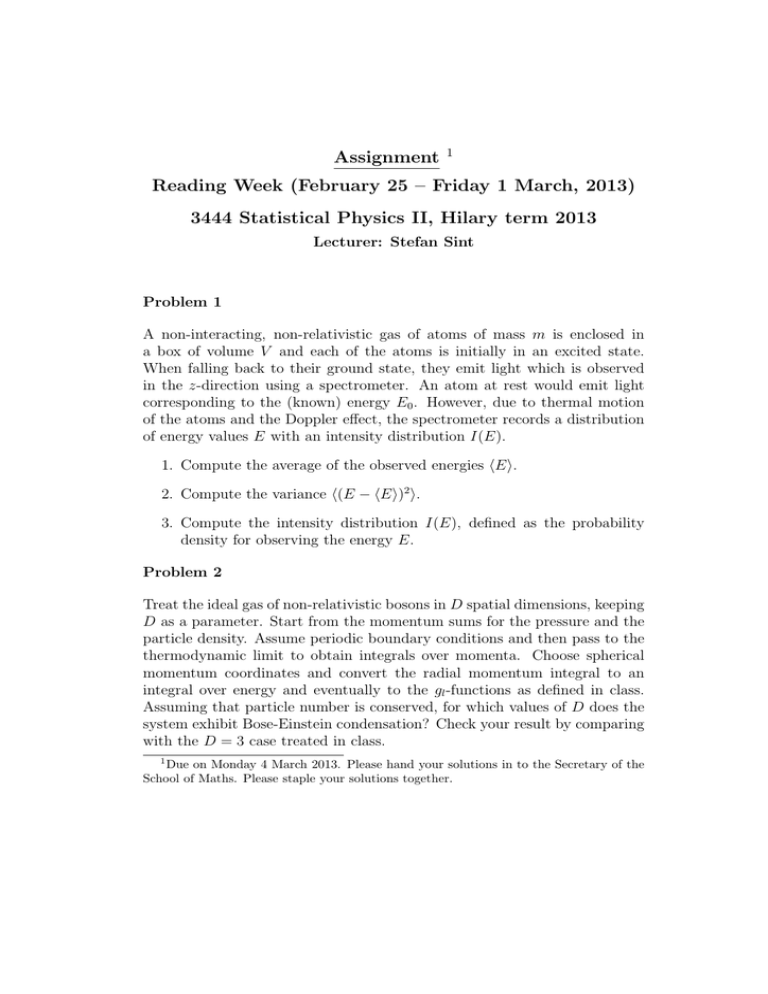
Assignment 1 Reading Week (February 25 – Friday 1 March, 2013) 3444 Statistical Physics II, Hilary term 2013 Lecturer: Stefan Sint Problem 1 A non-interacting, non-relativistic gas of atoms of mass m is enclosed in a box of volume V and each of the atoms is initially in an excited state. When falling back to their ground state, they emit light which is observed in the z-direction using a spectrometer. An atom at rest would emit light corresponding to the (known) energy E0 . However, due to thermal motion of the atoms and the Doppler effect, the spectrometer records a distribution of energy values E with an intensity distribution I(E). 1. Compute the average of the observed energies hEi. 2. Compute the variance h(E − hEi)2 i. 3. Compute the intensity distribution I(E), defined as the probability density for observing the energy E. Problem 2 Treat the ideal gas of non-relativistic bosons in D spatial dimensions, keeping D as a parameter. Start from the momentum sums for the pressure and the particle density. Assume periodic boundary conditions and then pass to the thermodynamic limit to obtain integrals over momenta. Choose spherical momentum coordinates and convert the radial momentum integral to an integral over energy and eventually to the gl -functions as defined in class. Assuming that particle number is conserved, for which values of D does the system exhibit Bose-Einstein condensation? Check your result by comparing with the D = 3 case treated in class. 1 Due on Monday 4 March 2013. Please hand your solutions in to the Secretary of the School of Maths. Please staple your solutions together. Hint: Obtain the integral over the angular momentum variables by calculating in 2 ways the D-dimensional gaussian integral, Z dD p exp(−p2 ), once directly and once by factorizing it. Problem 3 Consider an ideal Fermi gas with non-relativistic one-particle energies p2 /(2m). Obtain the virial expansion, PV = a1 + a2 t + a3 t 2 + . . . , N KT t= N λ3 , npol V (1) √ and compute the first 3 virial coefficients a1 , a2 and a3 . Here, λ = h/ 2πmkT denotes the thermal wavelength and nrmpol is the number of polarisation states. Problem 4 Determine the one-dimensional normalised probability density p(x) with maximal information entropy Z SI = − dx p(x) ln p(x) (2) (assume that the integral exists) and given mean and variance, Z ∞ Z ∞ 2 (x − µ)2 p(x) dx. x p(x) dx = 0, σ = µ= −∞ (3) −∞ Use the method of Lagrange multipliers to implement the constraints. Problem 5 Bose-Einstein condensation of an non-relativistic ideal Bose gas of N particles can be described as a first order phase transition. The Bose-Einstein condensate is made up of particles in the ground state and is sometimes referred to as the “fluid” phase, whereas the remainder of the particles make up the “gaseous” phase. As the density of the Bose gas is increased at fixed temperature there is a critical density beyond which the two phases co-exist and the pressure becomes independent of the density. The temperature dependence of the pressure in this transition region is described by the Clausius-Clapeyron equation, l dP (T ) = , dT T ∆v (4) where l denotes the latent heat per particle and ∆v is the difference of the specific volume per particle between the two phases. Derive the ClausiusClapeyron equation for the ideal Bose gas above the critical density and determine the latent heat.
